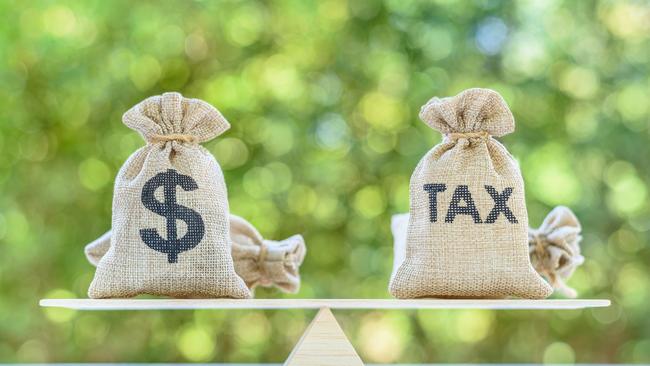Retirement planning and how to manage your money in the decade before you retire
In the last decade you intend to work, find out the excellent opportunities available to boost your retirement funding.

Business
Don't miss out on the headlines from Business. Followed categories will be added to My News.
So it turns out, to your surprise – and possibly to your horror – you will be reaching retirement age in about ten year’s time.
You have never really thought about it, you’ve never really done the numbers.
You thought it was miles away and now, well, it’s looming as a financial crossroads and you don’t know where to turn.
Relax, you have time on your side. What’s more, you most certainly do not have to have $1m or any other number the “retirement calculators” come up with in terms of your expected needs in the years ahead.
Rather you need to set your sails to optimise your plans for the coming decade. Here’s your ready made checklist.
Optimise super contributions
Unless you’re exceptionally organised you have probably not noticed how the Superannuation Guarantee (SG) has crept up in recent years.
Since July 2023 you have been paying 11 per cent of your salary into super. On the basis you’ve managed it so far with little real struggle, perhaps you could volunteer a little more – money which is ‘salary sacrificed’ will compound in the years ahead, bolstering your retirement savings.
The super tax concessions we have in our market remain very useful, as you can contribute up to $27,500 per annum before tax into super and this money will be taxed at just 15 per cent compared to whatever your income tax rate may be now.
Remember the number – $27,500 – is the total pre-tax contribution allowable. You must subtract whatever the SG was for your salary, and then the gap between this number and $27,500 is how much extra you can contribute per annum.

Go one further and make an after-tax contribution
If you really want to build up your super, you can still get a lot in to your fund post-tax. It may hurt to lose some of the money available to you, but once your post-tax contribution gets inside the super system it will work more effectively towards underpinning your retirement.
Remember, you can still have up to $1.9m in super before the earnings on your savings are hit with tax.
The annual post-tax cap is now at $110,000, and there is no one-off 15 per cent contribution tax attributed to this money, as you have already paid tax on it.
Keep pension access in mind
There is every chance you qualify for some pension payment even if you have a reasonable level of savings, as our system is tiered and the value of your home is not fully assessed when it comes to eligibility tests.
Put it this way, 62 per cent – a solid majority – of Australians have some form of pension access. On top of this, if you do qualify for the pension in any way, even for a tiny sum (let’s say $1 a fortnight) then you qualify for the Commonwealth Seniors Health Card (CSHC), which offers a range of discounts on health-related costs.
It is estimated more than 85 per cent of all senior Australians qualify for the CSHC.
The income threshold for the card has risen substantially in recent times: it is now $95,400 for singles and up to $152,640 for couples.
No wonder it’s available to almost everyone.
Consider downsizing
The popular federal home downsizer scheme is designed to make it more attractive for older Australians to leave the large family home and move to something a little more compact through the provision of a superannuation tax break.
In the past many people were not able to put money from the sale of the family home into super due to certain limits. This has changed and every person who sells their home over the age of 55 can make a one-off $300,000 tax free contribution to super which stands outside all existing super rules.
The deal is per person, so a couple could contribute $600,000.
In reality, the hard part of downsizing is the psychological and logistic toil of moving house – it might seem like a big deal to move house ten years before retirement, but by the time you actually reach retirement it might all just be too hard.
Asset allocation (if a fund manages your money)
If you are an active investor – even if your money is inside an industry or retail fund – then it will make a lot of sense to review your super.
At an elementary level this could simply mean comparing the performance of your fund against other funds to make sure you are not investing each year in a dud fund.
You could begin the process with YourSuper comparisons at www.mygov.au.
Then, if you wish to dig a little deeper, you can review whether the asset allocation of your fund is appropriate for your age – this should be available on your own fund’s website.
The textbooks would suggest your allocation (or distribution of the money) should be 60 per cent “growth” and 40 per cent “defensive” by the time of your retirement. This is a general rule, and it is often debated, but it remains a sound basis to work with a decade before retirement.
Asset allocation (if you do it yourself)
If you have a self-managed super fund then regardless of how well you might think you have managed your fund it might be time to sit down with an adviser and do a general review.
Over the past few years there has been a push inside the finance industry to get independent investors to move more into alternative investments, such as private equity.
Ironically though, as we review 2023, most big fat returns came from public equity – otherwise known as shares – especially the US.
Similarly, despite earnest entreaties for Australian investors to put their money into bonds, there have been disappointing total returns for most of the last three years.
Shares, property and cash have been the backbone of Australia SMSF and it has worked well for most people most of the time.
If you are going to diversify in the ten years before you retire, do it incrementally and very carefully.
Do everything you can to pay off your mortgage
Unfortunately, when we read about how much you should have to finance a comfortable retirement it is always on the assumption that you own your house outright. In its recent review of the perennial question ‘How much should you have in super?’ The Association of Superannuation Funds Australia produced a set of widely debated assumptions.
Put simply, there are two levels:
First is the “modest” retirement. The calculation is $100,000 in savings at age 67 is needed for either a single or couple, in reality most of the retirement income will come from the age pension.
The second level is a ‘comfortable’ retirement. The calculation being at age 67 a couple will need $690,000 of savings for a comfortable retirement, and a single person $595,000.
But here’s the thing. The number of Australians retiring with a mortgage is approaching 30 per cent – remember the value of your home is effectively irrelevant for the assessment of your pension qualification – so pay off that mortgage if possible.
Optimise high deposit rates while you can
Nobody knows where rates are headed to in 2024, but the consensus is they will start to drop in the second half of the year. If that is the case, then it is as good as it gets for cash in the bank.
What’s more, it is difficult to undervalue the peace of mind for a retiree in having “risk-free”, guaranteed money, which is what is on offer when we put cash on deposit in any bank or Authorised Deposit Taking Institution (ADI).
There are still two-year fixed deposit deals in the market at close to 5 per cent – if official rates fall from their current level of 4.35 per cent the banks will cut their own rates very quickly. In that circumstance, today’s deposit rates are going to look relatively attractive.
Rainy day money
Financial advisers call this the financial reserve, or, when they are talking to so-called high net worth individuals, “the liquid account”. It is a store of money you keep for emergencies so the emergencies do not knock out your larger plans when they occur.
As a very general rule you should keep three to six months worth of ongoing expenses free in a separate account.
For pre-retirees, the liquid account is particularly relevant because you may have to retire earlier than planned and you don’t want to be caught with “sequence risk”.
Don’t expect your ten year plan to work out perfectly
Everyone in finance gets a lot wrong all the time – it’s not the exception, it’s the rule. The markets, like life itself, are full of surprises. But, if you can get your direction right then the rewards should be well worth it.
More Coverage
Originally published as Retirement planning and how to manage your money in the decade before you retire





